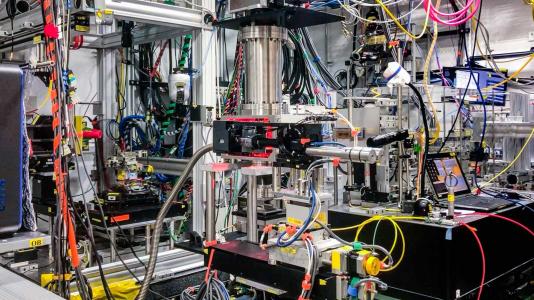For the first time, researchers use 3D printing to consistently produce one of the world’s strongest steel
Scientists used the Advanced Photon Source to help direct the generation of 17-4 PH stainless steel, a durable metal with many industrial uses.
Durability is a critical characteristic of the materials used to produce industrial machinery, marine vessels, aircraft and medical devices. For these applications, manufacturers rely on a particular type of stainless steel known as 17-4 PH due to its remarkably strong and corrosion-resistant properties. Now, for the first time, researchers have found a way to consistently make 17-4 PH steel using 3D printing methods, all while retaining all the material’s high-value characteristics.
To accomplish this breakthrough, the scientists turned to the Advanced Photon Source (APS), a U.S. Department of Energy (DOE) Office of Science user facility at DOE’s Argonne National Laboratory. Using a technique called X-ray diffraction, scientists from Argonne, the U.S. Department of Commerce’s National Institute of Standards and Technology (NIST) and the University of Wisconsin-Madison were able to examine the subtle, rapid phase changes of materials as the steel was being printed. This allowed them to monitor and direct the formation of its structure and determine its performance.
This research stands to help manufacturers use 3D printing to reduce costs and increase flexibility as compared to traditional casting methods. It also sets the stage for 3D printing other high performance alloys, such as titanium alloy and nickel-based superalloy.
“The APS played a critical role, allowing us to see the material’s transformation behavior, even in fast-cooling conditions.”
– Lianyi Chen, University of Wisconsin-Madison
Also known as additive manufacturing, 3D printing is the construction of a 3D object from a digital model. Producing steel and other metal alloys this way has long been a challenge. During the printing process, temperatures change quickly, making the crystal structure of the atoms within the material difficult to observe. When 3D printing 17-4 PH steel, the crystal structure must be of a precise composition. The PH stands for precipitation hardening, a heat treatment technique used to make malleable materials stronger, and the numbers refer to the alloy’s makeup: 17% chromium and 4% nickel. The structure of 17-4 PH steel includes nanoparticles that contribute to the material’s signature strength.
“When a material cools very fast during 3D printing the way 17-4 PH steel does, manufacturers previously struggled to understand it well and couldn’t predict what they were going to get,” said Lianyi Chen, an associate professor in the Mechanical Engineering department at the University of Wisconsin–Madison, who was part of the research team. “The APS played a critical role, allowing us to see the material’s transformation behavior, even in these fast-cooling conditions. We can now do real-time monitoring to see the structure change.”
Using the high-energy X-ray beams that the APS produces, “We can now actually look inside the metal as it’s being made to observe phase formation sequences. These have significant impact on the final properties of the steels,” said Andrew Chihpin Chuang, a physicist in the X-ray Science division at Argonne.
Because the changes at the atomic level during 3D printing happen so rapidly, the researchers needed an equally fast investigation technique. “We can observe the microstructure development in real time due to the high brightness of the APS,” said Peter Kenesei, a physicist in Argonne’s X-ray Science division. “The researcher can quickly make decisions to adjust the printing parameters in order to obtain a desired microstructure.”
The researchers believe their results show how user facilities such as the APS can enable the United States to have a competitive edge in pushing forward the next generation of advanced manufacturing technologies.
“We hope our success with this study helps increase the industrial impact of the research coming out of American synchrotron user facilities such as the APS,” said researcher Fan Zhang, a physicist at NIST. “If we want to establish American leadership in advanced manufacturing, these facilities are a great asset. Additive manufacturing opens up the design space, allowing us to create complex parts that are often impossible when using conventional technologies. That’s the true promise of this breakthrough.”
Subscribe to AM Chronicle Newsletter to stay connected: https://bit.ly/3fBZ1mP
Follow us on LinkedIn: https://bit.ly/3IjhrFq
Visit for more interesting content on additive manufacturing: https://amchronicle.com


